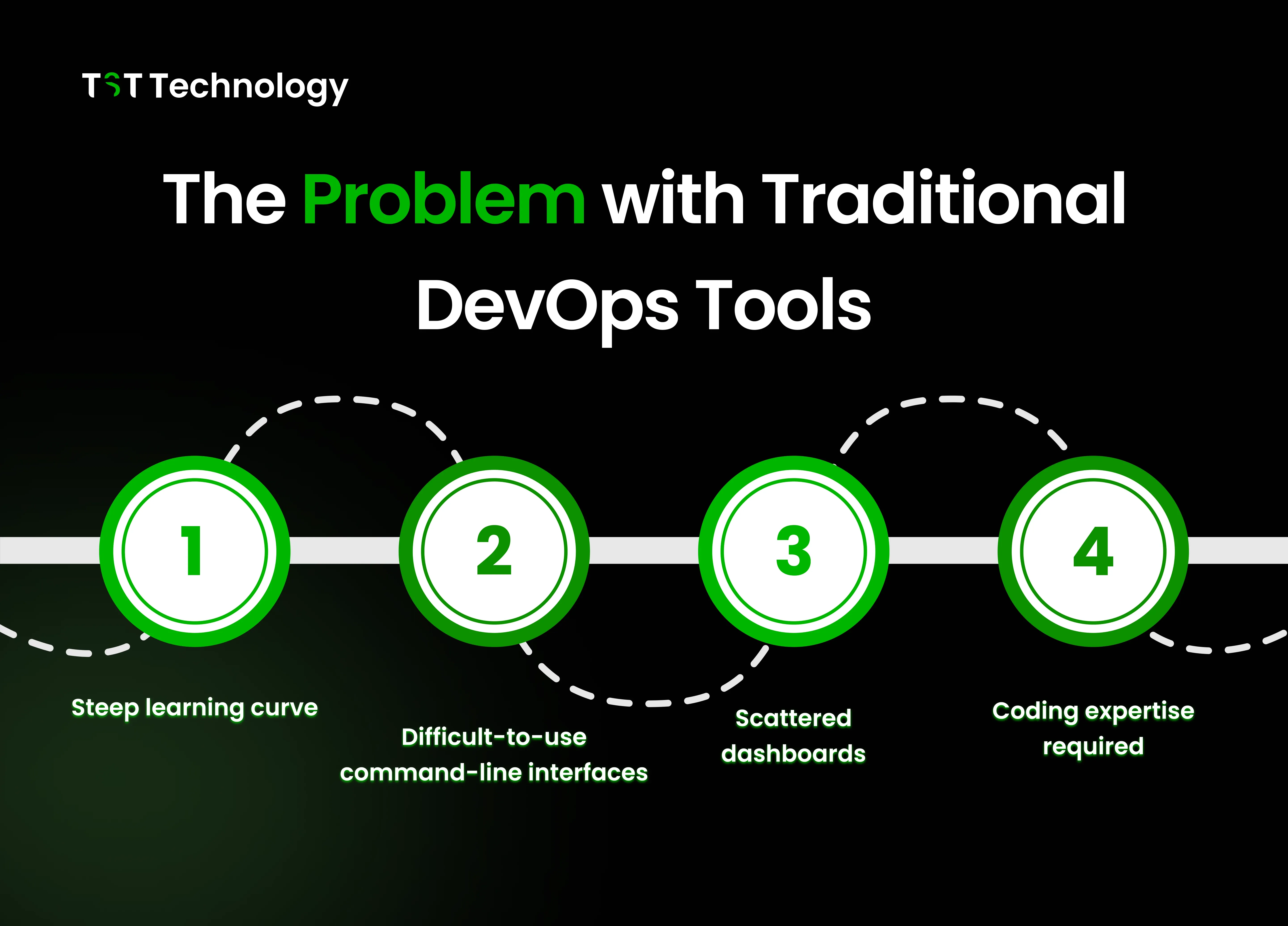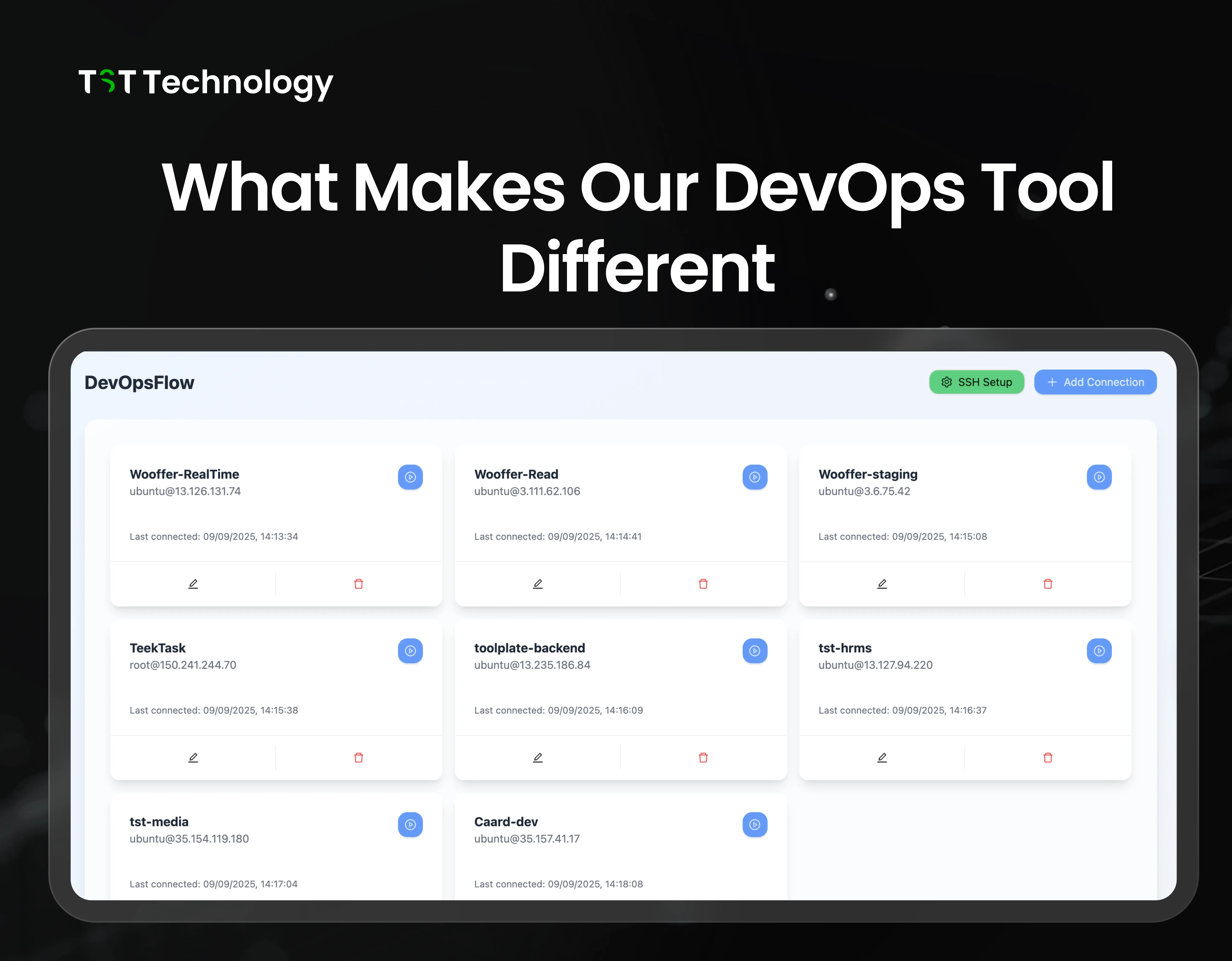In modern-day tech life, servers and infrastructure management can seem like too much. DevOps engineers have to remember a long list of commands and run them flawlessly to keep an eye on system health, deploy code, automate backups, and handle server configuration, all while trying to beat the clock and keep services up and running. But what if it were possible to make DevOps easier, more intuitive, and manageable even for those who are not technology gurus?
Introducing our all-in-one DevOps tool designed with a focus on user-friendliness and efficiency. Whether you’re a startup founder, developer, project manager, or system administrator, this tool offers a unified, streamlined interface to manage your servers, environments, backups, and infrastructure without needing to jump between terminals and complicated scripts.
The Problem with Traditional DevOps Tools

Most legacy DevOps platforms are strong but have a steep learning curve, as they do every task using commands. Difficult-to-use command-line interfaces, scattered dashboards, and the requirement for coding expertise present obstacles, particularly for small teams or even semi-technical users. It usually takes several programs to monitor server health, run commands, manipulate files, and automate backups. This fragmentation wastes precious time and increases the chances for error.
Most tools aren't designed with the needs of startups or teams that want to quickly accomplish tasks without deep DevOps knowledge. What happens? Important things get behind schedule or relegated to a few experts, and development and deployment cycles slow down.
What Makes Our DevOps Tool Different?

Our tool shifts the paradigm by giving you one simple interface that places all the important DevOps controls at your fingertips. You can:
- Manage and connect multiple servers at once
- Switch flawlessly across three environments: development, staging, and production
- View real-time infrastructure statistics such as CPU, memory, disk usage, and top processes
Most notably, it's designed to be simple enough that non-tech or semi-technical team members feel comfortable using it, adding clarity and collaboration to what were once difficult server tasks.
Key Features That Empower Your Team
Our DevOps tool is filled with robust features to automate backups in a top-tier GUI, increase productivity, and make server management easy to use across all skill levels. Here's a closer look at the features that differentiate this tool:
Multi-server Management
It can be a time-consuming and error-rich process to manage multiple instances or servers separately. Our application allows you to connect, access, and manage several instances and servers at one time from a single interface.
File Directory Management
Managing files between servers has always involved logging onto each server or employing complicated file transfer protocols. This tool allows you to move around file directories, upload, download, zip, unzip, and arrange files effortlessly within the interface. The feature streamlines this process by eliminating the need to switch between applications, providing a single platform for secure and effortless management of your server files.
Integrated Command Console
A highlight is the command console, which comes pre-installed and allows you to execute shell commands right inside the tool. No more opening additional SSH sessions or terminals, perform your commands in a familiar, unified environment. This feature saves time and cuts down on context switching while providing complete control over your servers with the ease of a GUI.
Infrastructure Monitoring
Monitoring server health is critical for preventing downtime and performance bottlenecks. The tool provides real-time monitoring of important infrastructure metrics like CPU usage, memory usage, disk storage, and top-running processes. This gives you the ability to identify potential issues in advance, optimize resource allocation, and ensure high availability without depending on third-party monitoring systems.
Backup Job Scheduling
Security and recoverability of data are of utmost importance. Our backup management module allows you to configure automatic backup jobs without writing a single line of code. Just choose your source and destination directories, specify the frequency of the backup (hourly, daily, weekly, etc.), and let the tool do the rest. You can see all scheduled jobs, track their last run dates, and review status reports, all within the platform. This hassle-free practice eliminates any risk of missing a backup, and you are assured peace of mind along with data resilience.
All these features together enable your team to have complete control over their DevOps processes in an easy, effective, and fault-proof way. By eliminating the hindrances typically linked with server management, the tool leaves your team with more time for innovation, quicker deployments, and smoother runs.
Why User-Friendliness Matters in DevOps?
DevOps is usually thought of as a world that is only for expert engineers who understand command-line tools, scripting, and sophisticated environments. However, in practice, reliable deployment and infrastructure management rely on collaboration between different teams. Project managers, testers, and even business users appreciate tools that don't need deep technical expertise to operate.
By making DevOps accessible:
- Teams deploy and debug quickly.
- Risk of human failure is minimised through simple, directed interfaces.
- More team members can contribute to daily activities, enhancing overall productivity.
Our tool bridges the gap between technical sophistication and real-world use, enabling diverse teams to collaborate more effectively.
Use Cases and Benefits of the Tool
This tool is perfect for:
- Startups and SMEs: Who require solid server management without committing sizable resources or employing full-time DevOps personnel.
- Tech teams with semi-technical members: Project managers or testers can run daily tasks themselves.
- Freelancers and agencies: Easily and confidently managing many client servers.
- Backup-confident teams: Leverage automated, no-code backup scheduling to secure data.
By automating setup, monitoring, and command execution, the tool enables teams to focus on what they do best: creating products and delivering value.
Getting Started
Ready to streamline DevOps management? Getting started is simple:
- Request a personalised demo at https://calendly.com/daxesh-meet/30min?month=2025-07.
- Follow the onboarding guide to connect your servers and add environments.
- Explore the dashboard to monitor infrastructure, run commands, and schedule backups hassle-free.
For more help, check out our tutorials and visit our DevOps service page in case you want full DevOps support.
For a FREE Consultation Call with TST Technology (Tech+AI), book your slot via the Calendly link.
Conclusion
DevOps doesn’t have to be complicated. With the right tool, managing servers, running commands, monitoring infrastructure, and automating backups can be simple, fast, and accessible to technical and non-technical users alike.
Our solution is meant to democratize DevOps, making it possible for teams of any size and skill set to work confidently and effectively. Give it a try today and enjoy a new age of easy-to-use infrastructure management.






